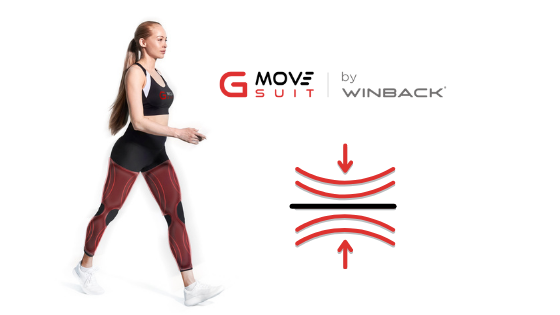Contention and compression are two different pressure systems that do not serve the same purpose. Some people confuse the two terms. What are the differences and objectives, and the tools available for active compression? Our answers.
The differences between contention and compression
Contention is a means of preventing the volume of the lower limb from increasing during muscle contraction. When walking, contention will prevent the volume of the sural triceps from increasing. Contention is used by means of low-flexibility bands that exert little pressure. These will use a strong pressure when walking to contain the increase in volume due to muscle contraction. The name “contention socks ” is not appropriate: they are in fact “compression socks”.
Conversely, compression consists of light pressure on the lower limbs, applicable at rest or during exercise. This compression is widely used with “compression socks” and the GMOVE-SUIT. This low-intensity pressure is used to treat venous and blood circulation disorders, such as oedema or pain in the lower limbs.
The aim is to promote venous return by exerting this light compression constantly. Indeed, this practice is known to improve blood circulation in the muscles as a result of dilation of the venous walls.
It is not only patients with the relevant conditions who use it, but also athletes use this compression system. The benefits for the latter are to actively improve muscle recovery.
GMOVE-SUIT and compression stockings, active compression
Compression socks have three or four pressure levels, most of which range from 10 to 40 mmHg. The aim is to use them over a long period of time to make daily life more comfortable in the face of certain pathologies. The socks apply “low” pressure consistently, and the pressure is distributed evenly over the limbs.
GMOVE-SUIT offers different compression applications with the same objective, thanks to three different programs and a pressure ranging from 20 to 120 mmHg. It is important to note that the compression and the programmes must be used synchronously in order to obtain the best benefits.
The equipment allows for intermittent or constant compression to alternatively stimulate venous return. Compression with interval time is very appreciated for the reduction of oedema and by sportsmen for muscle recovery. The higher pressure power allows for a more significant stimulation and will act more effectively than compression stockings.
Do not hesitate to consult our other articles in order to understand everything about the functioning of GMOVE-SUIT.

